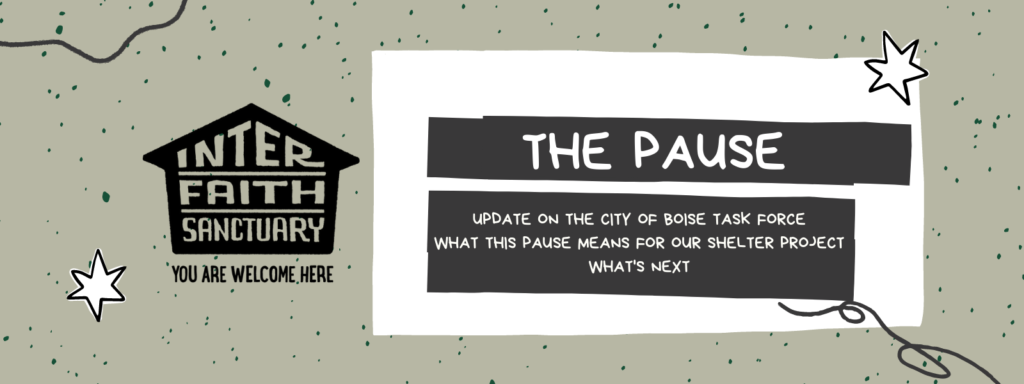
On June 9, Interfaith Sanctuary met with Mayor Lauren McLean and agreed to pause our application for a conditional use permit for our new shelter on State Street. We made the decision after the mayor proposed that a task force meet for eight weeks to look closely at our chosen location and our plan to expand services at the shelter, and we’re ready to move forward with this conversation in order to best serve the guests in our care.
At Interfaith, our goal is to provide the most comprehensive and inclusive services possible to our guests. We do so in collaboration with an array of local organizations that serve our community’s most vulnerable, and it’s our wish that this committee allows for a broader perspective on what we all hope and desire to be able to do at our new location.
As an independent nonprofit, how we move in our action of buying a building or developing programming inside our shelter is determined solely by our board of directors and staff. However, our homeless shelter operates in a continuum of care, and the decision to relocate was not made alone.
We understand nonetheless that the public may not feel included in the planning process. As we pause our application for the permit in favor of the task force’s recommendation, it’s important to explain why our proposed move to State Street matters, what it represents and why it’s necessary to expand services in our growing community.
Last year, the COVID-19 pandemic accelerated a local expansion of homeless services, as well as Interfaith Sanctuary’s long-term plan to move to a larger building. Prior to the pandemic, we served 164 guests, 40 of whom were families with children. Through collaboration with Our Path Home partners, temporary programs have allowed us to house 140 single men and women at our downtown shelter and an additional 100 guests including families with children, seniors and our most medically fragile at a hotel, nearly doubling our capacity to care for those in need.
Our proposed move would allow us to locate those services inside one building, providing the most cohesive environment possible to all of our guests as they work their way back into housing. This is something our experts know is critical as we provide wraparound services and community to all those who seek it.
In an environment where the cost of living is skyrocketing and few affordable units are vacant, shelter remains a critical first step toward helping our fellow residents off the street as they become displaced.
According to the Southwest Idaho chapter of the National Association of Residential Property Managers, Ada County had a total of only 50 vacancies out of 6,664 rental units across the county in the first quarter of 2021, a 0.75% vacancy rate. In neighboring Canyon County, the vacancy rate was 0.39%, with only 13 of 2,600 units available for rent.
Homeless community members trying to access permanent housing are facing waits of up to a year or longer for placement into affordable units. Our work has become even more urgent as the national eviction moratorium ends and home prices continue to rise.
Currently, neighborhood opposition against the housing of our services in a single building is derailing local conversation on how to best serve those in need. The stability of our shelter and the people we house has been threatened as we attempt to relocate before we can no longer shelter guests at our current location in downtown. Disinformation circulating in the community has caused real harm to our guests, community partners and staff.
In reality, our shelter’s relocation joins a broader movement calling for a shift from the traditional emergency shelter toward a Housing First approach that eliminates barriers to shelter by providing 24-hour access, immediate and low-barrier entry, voluntary participation in supportive services and diversion to appropriate housing alternatives through conversations and community support. Under this model, homeless residents don’t have to prove they’re “ready” for housing before accessing available services.
Research shows this model creates safer communities and reduces the cost burden placed on public services as residents work together to end the injustice of a system that has historically criminalized people who slip through the cracks.
Boise’s homeless services are concentrated in the Cooper Court area of downtown. The corralling of human lives and social service organizations into the span of a few blocks is not unique to Boise, but Interfaith is joining a growing push across the United States to end the practice of rendering homeless people invisible by breaking that cycle locally.
